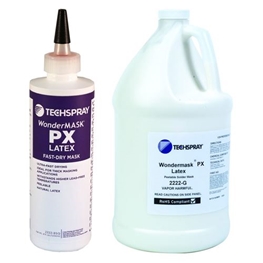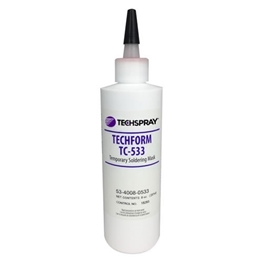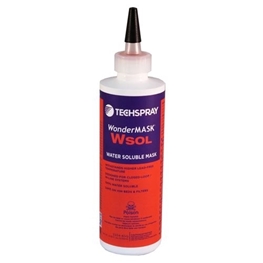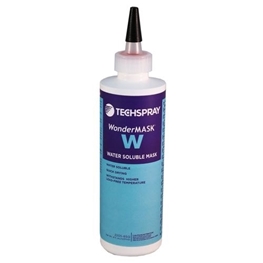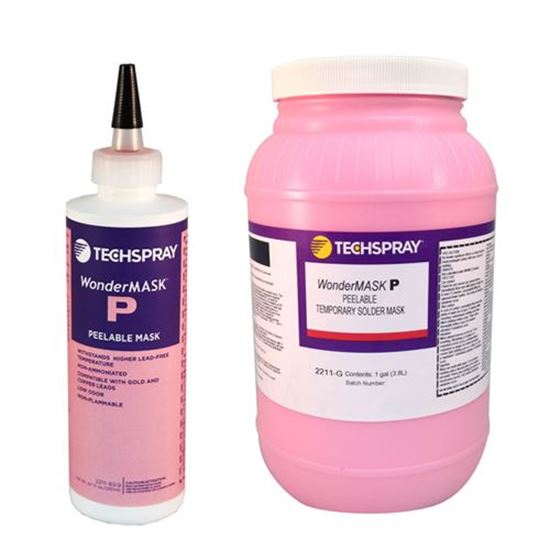
WonderMASK P Peelable Solder Mask
Non-ammoniated, low odor peelable mask

Request A Sample
Your Sample Request
WonderMASK P Peelable Solder Mask
*=required field
TDS
REGS
SDS
FAQ's
Are solder masks RoHS compliant?
Yes, all of our temporary solder masks are RoHS compliant. See RoHS documentation by using the link under the photo on the product page of the mask you are considering.
Is there a way to dissolve or wash off pieces of peelable solder mask?
Sorry, the best method is with tweezers or a brush. Peelable solder mask will not readily dissolve in cleaning solvents.
Does WonderMASK temporary solder mask contain silicone?
None of our masks contain silicone and they leave no residue behind.
You did not finish submitting your information to request a sample

